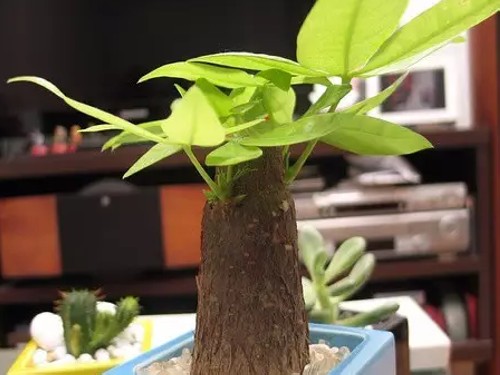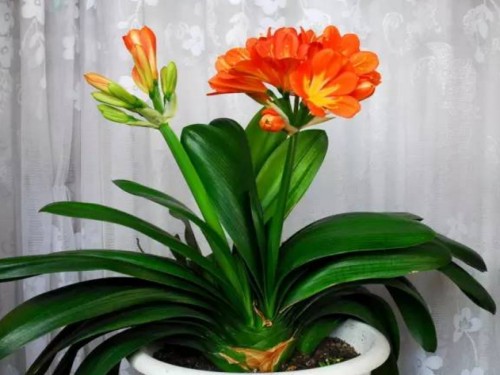What about the rotten roots of potted orchids?
The flowers of Cymbidium are bright and have high ornamental value, but the cultivation of Cymbidium is not so easy, so it is necessary to master strong breeding technology. The root rot disease of Cymbidium can occur all the year round, but it mostly occurs in summer. It is easy to rot if you do not pay attention to water control. It is a great pity to let it go. Don't be discouraged. It will come back to life after treatment. Let's take a look at the causes and treatment of the rotten roots of Cymbidium.
Analysis 1: the permeability of nutritious soil is not good, and the soil is overripe or overborn.
Solution: the oak leaves used before the preparation of nutritious soil should not be over-rotted or over-raw.
Analysis 2: improper fertilization.
Solution: orchid fertilizer should not be too much, otherwise heat will be generated to burn the root system and cause rot.
Analysis 3: too much watering.
Solution: watering should also be appropriate, too much will make the nutrient soil water content is too large, poor permeability, root breathing difficulties, resulting in rotting roots. Be careful not to water the heart of the orchid.
Analysis 4: put nutritious soil carrier bacteria to propagate, high-temperature and humid environment to prevent bacterial reproduction, bacterial infection, in this environment a large number of bacteria multiply, directly invade the root system and cause rotting root.
Solution: high temperature in summer and autumn, excessive fertilization and watering, it is easy to appear root rot. It is necessary to strengthen cooling and ventilation, control man-made mechanical injuries in high temperature season, spray drugs in time to prevent insect bites, and reduce the reproduction and spread of germs. Sometimes the pathogen overwinters in the soil with the disease residue, and the flower soil must be sterilized when changing the soil in spring.
The treatment of rotten roots of Cymbidium: if you find that there are rotten roots, you should be treated immediately. Take out the plant, remove the rotten root, rinse the root with 1% potassium permanganate water for disinfection, or apply some charcoal powder to the affected area and sun the root in the greenhouse for about 30 minutes. If the rotten root is more than 50% or all rotten, use the above method to treat and then use river sand to promote the root. The root-promoting temperature should be higher than the normal temperature, which is generally controlled at about 22-30 ℃, so that new roots will grow after about 2 months, and then transplanted to the nutrient soil basin.
The reason why the gentleman orchid sucks?
The main results are as follows: 1. High temperature, high humidity and poor ventilation make the fleshy root of the plant rotten easily.
2. too much watering, high water content of nutritious soil, poor air permeability, long-term soaking of roots by water, resulting in discoloration and decay of roots.
3. Hypertrophy, the fertilizer in the nutritious soil is not fully fermented, resulting in root rotting caused by heating and burning, improper fertilization during the growing period, excessive amount of fertilizer, resulting in fertilizer contact with the root, resulting in root burning, affecting the root absorption capacity, root tissue is destroyed and rotten root, we should pay attention to the diligent application of thin fertilizer.
How to deal with the rotten roots of gentleman orchids?
The main results are as follows: 1. If the root of Cymbidium is rotten, it can be alleviated by changing soil, controlling watering, proper illumination and so on.
2. The rotten heart is not very serious. Observe whether the tender leaves on both sides of the center are rotten. If the leaves are rotten, remove the rotten leaves immediately, absorb the excess water with toilet paper or cotton, and then transfer them to a drier environment.
3. The solution to the rotten roots of Cymbidium
1). Cleaning of rotten roots
Plant the rotten roots from the flowerpot, gently peel off the soil, then rinse the roots with water and clean the rotting roots with scissors.
2). Disinfection of roots
Soak the cleaned roots in 0.1% potassium permanganate solution for 5 minutes, then apply a little sulfur powder or plant ash or carbendazim, and then dry in a cool place (about 2 days).
3) replanting
After drying, the gentleman orchid is planted in the sandy soil to promote the germination of new roots. after planting, you should control watering, do not dry and do not water, so as not to rot the roots again, and put them in a cool and ventilated place. the ground is often sprinkled or foliar spray to maintain a certain amount of air humidity and can be re-rooted in about 2-3 months. The rotten roots of Cymbidium will cause irreparable losses to the growth and flowering of the plant, no matter how they are rescued in time, and it will take quite some time to fully restore their growth. Therefore, at ordinary times, we should do a good job in prevention as far as possible to avoid the occurrence of rotting roots.
Time: 2019-06-01 Click:
- Prev

How to remedy the rotten roots of potted rich trees
The rich tree is a popular potted plant, which can be sown when the temperature is above 20 ℃, and the germination rate is still very high. Compared with the cuttage potted plant bought, the rich tree sown by oneself is easier to maintain. Rich trees do not like water, and too much watering will cause rotten roots. But the plants show slowly.
- Next

The treatment method of rotten Root of Cymbidium
After the flowers have rotten roots, they will quickly cause the death of the aboveground parts. If it is a non-infectious rotten root, the plant should be removed from the basin as soon as possible, cut off the rotten root, and carefully maintained in the semi-shady place after re-potting. If it is discovered early and dealt with in time, it can be saved, but if it is too long and the water loss is serious, it will not be cured.
Related
- Fuxing push coffee new agricultural production and marketing class: lack of small-scale processing plants
- Jujube rice field leisure farm deep ploughing Yilan for five years to create a space for organic food and play
- Nongyu Farm-A trial of organic papaya for brave women with advanced technology
- Four points for attention in the prevention and control of diseases and insect pests of edible fungi
- How to add nutrient solution to Edible Fungi
- Is there any good way to control edible fungus mites?
- Open Inoculation Technology of Edible Fungi
- Is there any clever way to use fertilizer for edible fungus in winter?
- What agents are used to kill the pathogens of edible fungi in the mushroom shed?
- Rapid drying of Edible Fungi

